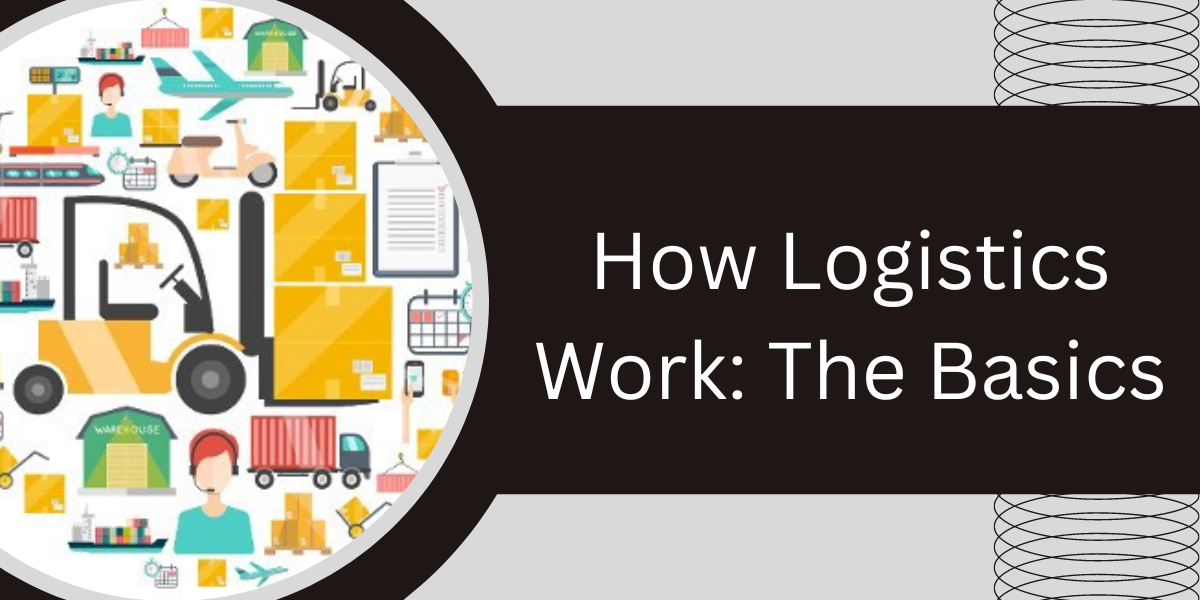How Logistics Work: The Basics

When you think of logistics, what comes to mind? Do you think of a bunch of people in a room with spreadsheets and calculators, trying to figure out the best way to get a product from point A to point B? Or do you think of a truck driver on the open road, making deliveries? The truth is, logistics is both of these things and more. It’s the science of figuring out how to move goods efficiently, and it’s critical to businesses and economies all over the world. In this blog post, we’ll explore the basics of how logistics work.
What is logistics?
Logistics is the process of planning, executing, and controlling the transportation and storage of goods. It includes the movement of materials from suppliers to manufacturers, from factories to warehouses, and from warehouses to retailers.
Logistics is a critical part of supply chain management. A company’s logistics system must be designed to meet the needs of its customers and suppliers. The system must be able to move materials quickly and efficiently, while minimizing cost and maximizing value.
A well-designed logistics system can provide a company with a competitive advantage in the marketplace. Logistics is a complex and dynamic field, and companies must continually adapt their systems to meet changing demands.
The different types of logistics
There are various types of logistics, each with its own unique set of benefits and drawbacks. The most commonly used types of logistics are:
1. First In, First Out (FIFO): FIFO is the most basic type of logistics, in which goods are stored and retrieved in the order in which they are received. This is the simplest and most efficient way to manage inventory, but can be difficult to maintain if products have different shelf lives.
2. Last In, First Out (LIFO): LIFO is the opposite of FIFO, in which goods are stored and retrieved in There are many benefits to incorporating logistics into your business operations. By definition, logistics is the coordination of all resources required to complete a task or process. This includes everything from materials and supplies to transportation and storage.
Logistics can help you save time and money by streamlining your operations and improving your supply chain management. It can also help you better manage your inventory, forecast demand, and respond to customer needs. In addition, logistics can improve communication and collaboration between different departments within your company.
Overall, the benefits of logistics can be summed up in three key points: efficiency, effectiveness, and agility. When done correctly, logistics can help you achieve all of these things and more.
If You are Lookig For Best Logistics Company In Dubai then Click On The Blow Button.

The challenges of logistics
There are many challenges that come with managing logistics. One of the biggest challenges is ensuring that all of the different pieces of the puzzle come together seamlessly. There are a lot of moving parts in logistics, and if any one of them is not working correctly, it can throw off the whole system.
Another challenge is dealing with unexpected events. A sudden change in weather, for example, can cause havoc for logistics managers who have to scramble to reroute shipments. And then there are always the ever-present challenges of cost and efficiency. Logistics managers are constantly looking for ways to save money and increase efficiency.
Ultimately, managing logistics is a complex and challenging job, but it is essential for businesses that want to succeed in today’s global marketplace.
How to make logistics work for your business
In order for logistics to work for your business, you need to understand how the process works and what your options are. Logistics is the process of planning, implementing, and controlling the transportation and storage of goods. It includes the coordination of resources in order to meet the needs of customers. There are three components to logistics: transportation, handling, and information.
Transportation is the movement of goods from one location to another. This can be done by land, air, or water. Handling refers to the loading and unloading of goods onto vehicles and into storage facilities. Information is used to track goods as they move through the supply chain.
There are several ways to make logistics work for your business. One way is to use a third-party logistics provider (3PL). A 3PL manages all aspects of logistics for your business, from transportation management to warehousing and distribution. This can be a cost-effective way to outsource your logistics needs.
Another way to make logistics work for your business is to use technology to streamline the process. There are many software solutions available that can help you with route planning, tracking shipments, and managing inventory levels. By using technology, you can automate many of the tasks involved in logistics, which will save you time and money.
No matter what method you choose, making logistics work for your business requires careful planning and execution. By understanding how logistics works and taking advantage of available resources, you can ensure that your
As we navigate the unpredictable nature of weather, staying informed is key. Stay prepared with reliable forecasts and be ready for any conditions. Whether it’s sunny skies or stormy weather, being weather-wise can keep you safe and ready for whatever comes your way.


